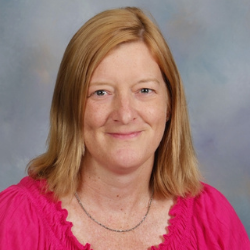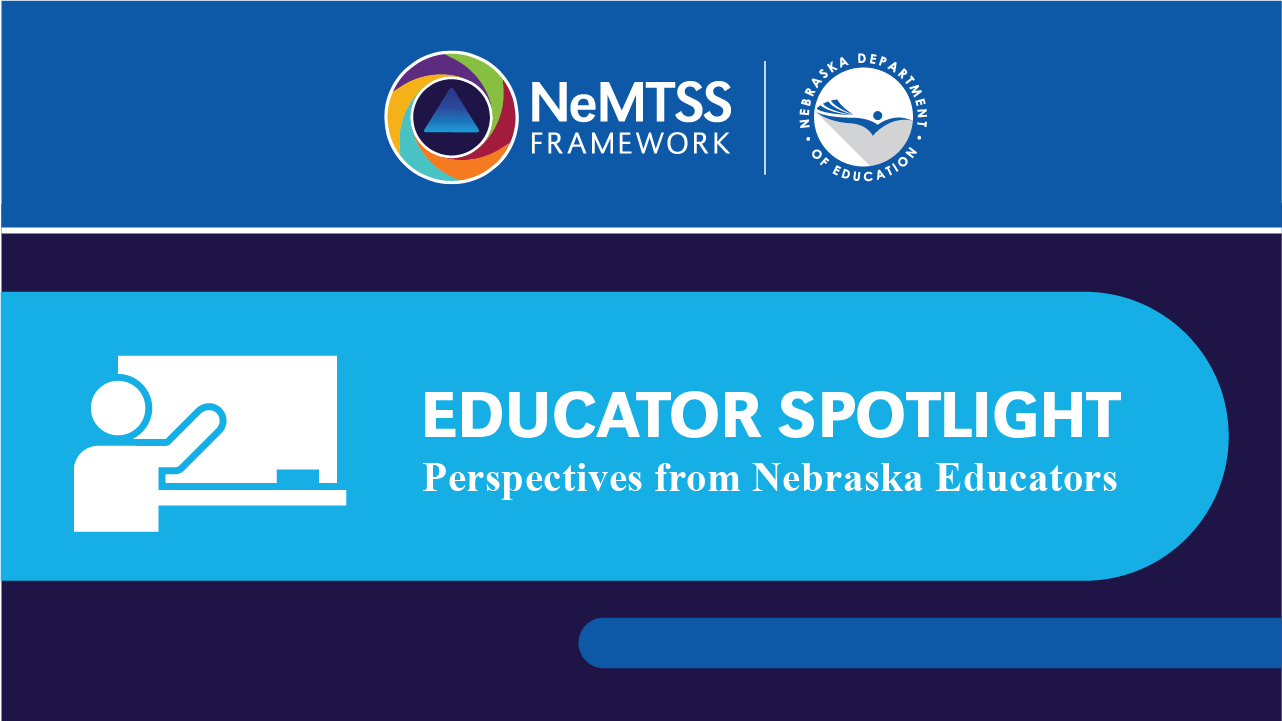
Sarah Schuppan, Kindergarten Teacher
Westside Community Schools
Omaha, Nebraska
How long have you been in education?
Sarah Schuppan: 23 years
Can you briefly describe your work with NeMTSS?
SS: As a general education kindergarten teacher, I use a Multi-tiered System of Support (MTSS) in my daily teaching to increase the percentage of students at benchmark. I regularly assess and use MTSS data to determine what my students need to be more proficient. I also serve as a representative of general education teachers on our district’s MTSS leadership team, where I participate in the development of our MTSS framework processes.
How do you use NeMTSS principles in your daily work?
SS: In my daily work, I use MTSS principles of prevention, high expectations for students, data-based decision-making and focusing first on core instruction with grade-level content to maximize the effectiveness for students. One key avenue for prevention and improving core instruction has been my focus on explicit, phonics teaching. I have increased the explicitness of my core instruction and teach foundational reading skills in both whole group and small group. I have generalized these explicit instruction principles into my math instruction now as well. All our small groups are organized based on screening data, and we share students across classes in order to have students with similar skills and needs together. Assessment is in the forefront of our decisions and work. Seeing the results of student growth further reinforces setting high expectations for students each year.
What were your feelings about NeMTSS before you began working with it?
SS: Before working with MTSS, we used RTI in our district, and so I thought this was only for students below average and needing extra support from an interventionist. When I first heard about MTSS, I remember thinking, “What is so wrong with RTI and why are we changing?” Now, learning and operating within MTSS principles, I see that MTSS is more than just interventions for a few students. It’s about how we are getting more kids closer to proficiency and maintaining mastery of skills. We are now going deeper with focused skills instead of covering a wide breadth of information for all students. Our school team operates with more of an “our students” mentality in how we collaborate to meet the needs of all learners in the most efficient way.
Can you tell us about an experience with a student that was made better because of your training with NeMTSS?
SS: I see that our “borderline” kids are really benefitting from MTSS the most. By increasing the explicitness of instruction for all students and focusing on systemic phonics instruction, we are lifting the achievement of all. When we see students who are so close to where we want them based on their progress monitoring graphs, we can now implement quick practices on specific skills they need to review. This extra push is getting them closer to mastery and increasing their confidence. Prior to MTSS, these borderline students stayed on the cusp, and now we can meet their needs within the classroom and perhaps with some additional, supplemental supports.
What would you tell educators who haven’t heard of MTSS yet?
SS: Give it a try! I have experienced first-hand how MTSS makes a difference. I see evidence of this with kids grasping more skills, mastering more content and increasing their potential shows. I was hesitant at the beginning of our district’s MTSS rollout. Being a part of the process, as a teacher, I have a lot more input, better understanding of my students and am part of the discussion of what we need to do to help all students. It’s working!
What is a goal you have for yourself, your building or your classroom that MTSS can help you reach?
SS: MTSS has helped me to push the expectations for students. My goal is to get as many students to benchmark as possible, and at a minimum, at least 80%. MTSS principles and work foster this goal and are pushing our school and district to greater achievement for all kids. By using more regular screening and progress monitoring, I am better able to understand my students’ thinking and behaviors while reading, which is helpful in knowing how to best meet their needs. We are beginning to expand our MTSS system for math, and already look at social/emotional/behavior data, and so it is my goal that MTSS is a way for us to systematically have a whole-child focus. I am proud of how much MTSS has already helped us improve instruction and outcomes for students.



